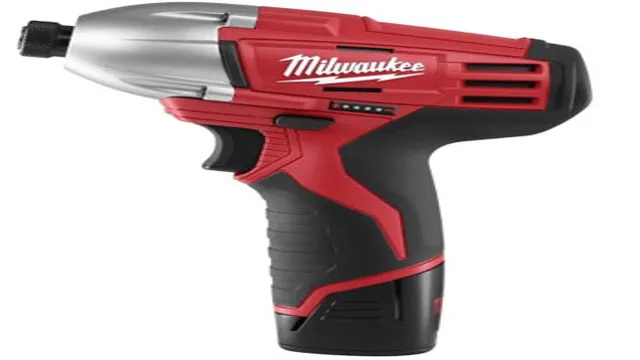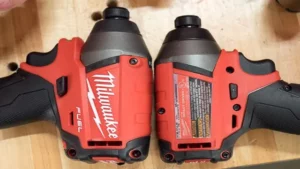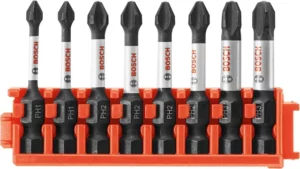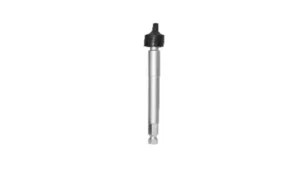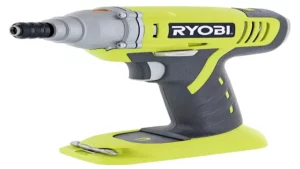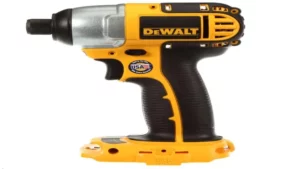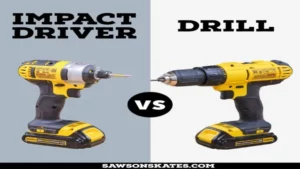Have you ever tried to drill holes in tough materials like metal or hardwood and felt like you were fighting a losing battle? Traditional drills can sometimes struggle to make clean, precise holes in these types of materials. But fear not, because there’s a tool that can make this task a whole lot easier and faster: an impact driver! An impact driver is a powerful, handheld tool that can apply concentrated force to your drill bit, making it easier to drill through tough materials. With its high torque output and rapid, pulsing blows, an impact driver can quickly and efficiently drive your drill bit through even the thickest material without getting stuck or bogged down.
Using an impact driver to drill holes is a great way to save time and effort, especially if you’re working with hard materials like metal or timber. Plus, because an impact driver applies downward force directly to the bit, you don’t need to apply as much pressure with your hand, making the process much less tiring. So, whether you’re working on a DIY project at home or on a construction site, an impact driver can be an indispensable tool for drilling holes quickly and easily.
With its power and efficiency, it can help you get the job done faster and more accurately, without causing undue strain on your arms and hands. Give it a try and see for yourself!
Understanding Your Impact Driver
One of the most common questions people ask about impact drivers is whether or not they can be used to drill holes. The simple answer is: yes, you can drill holes with an impact driver. However, there are a few things you should keep in mind.
First, you’ll need to choose the appropriate drill bit for the job. Impact drivers use hex-shank bits, which have a different shape than the round-shank bits used by most drills. You’ll also want to make sure you’re using the appropriate speed and torque settings on your impact driver, as drilling holes requires a different level of force than driving screws.
Keep in mind that while an impact driver can be used for light drilling tasks, it’s not a substitute for a dedicated drill for heavy-duty drilling jobs. If you’re unsure about whether an impact driver is the right tool for the job, consult the manufacturer’s guidelines or seek advice from a professional.
Power and Torque
If you’re in the market for an impact driver, it’s important to understand the difference between power and torque. Power refers to the maximum amount of work that can be accomplished with the tool, while torque refers to the amount of rotational force the tool can generate. When it comes to impact drivers, torque is especially important because it’s what allows the tool to drive screws and other fasteners into tough materials like hardwood or metal.
The higher the torque, the easier it will be to drive those fasteners. However, it’s important to remember that power and torque aren’t the only factors to consider when choosing an impact driver. You’ll also want to think about things like ergonomics and battery life to ensure you’re getting a tool that meets your needs.
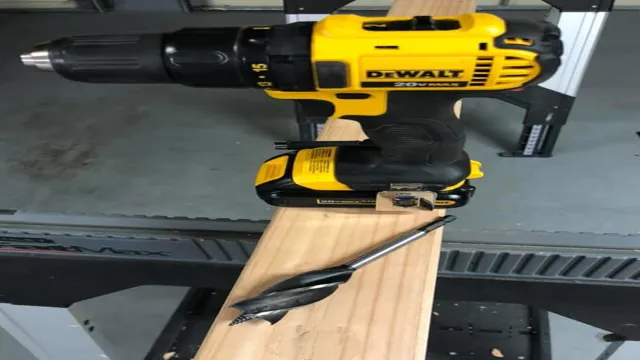
Chuck Size
Chuck size is an important factor to consider when using an impact driver. It refers to the diameter of the chuck, which holds the drill bit or screwdriver bit. Most impact drivers have chucks with a size range of 1/4 inch to 1/2 inch.
The larger the chuck size, the more torque the impact driver can generate and the larger the bits it can hold. The Chuck size is an important consideration when choosing an impact driver because it determines the range of bits that you can use. The smaller chuck size is preferable for lighter and more precise work, while the larger size is ideal for heavy-duty projects.
Therefore, it’s important to assess the task at hand and choose the impact driver with the appropriate chuck size for the job. By doing so, you’ll ensure you have an impact driver that will deliver the necessary power and precision to get the job done right the first time.
Type of Bits
When it comes to impact drivers, it’s important to understand the type of bits that work with your tool. Impact drivers usually come with standard hexagonal-shaped chucks that take bits with hex shanks. This type of bit is easy to insert and remove, providing a quick and straightforward way to switch your bits depending on your task.
There are various types of bits to choose from, including flathead, Phillips, Torx, and square bits, each designed for specific tasks. For example, Phillips bits work great for fastening screws while Torx bits excel at handling threaded bolts and screws. Understanding the right type of bit for your impact driver will help you get your work done more efficiently and effectively while minimizing the risk of damaging your materials.
Can You Drill Holes with an Impact Driver?
If you’re wondering whether or not you can drill holes with an impact driver, the answer is a resounding yes! While impact drivers are primarily used for driving screws and tightening bolts, they can also be used for drilling holes into a variety of materials. The key is to make sure you have the right kind of drill bit for the job, as not all drill bits are compatible with impact drivers. Look for specially designed bits that are labeled as suitable for use with impact drivers, as these will be equipped to handle the high torque and rotational speed of the tool.
Whether you’re working on a DIY project or tackling a professional job, an impact driver can be a versatile and reliable tool for both drilling and driving tasks.
Yes, You Can!
If you’re asking whether you can drill holes with an impact driver, the answer is yes, you can! While impact drivers are primarily designed for driving screws, they can also be used for drilling holes. It’s important to note that impact drivers typically offer less control than traditional drills, so you’ll need to be extra careful when using one for drilling tasks. Make sure you use the right drill bit for the material you’re drilling into, and start with a low speed and light pressure until you get the hang of it.
Also, keep in mind that impact drivers are typically heavier and more powerful than drills, so they can be a bit more tiring to use for extended periods. But with a little practice and patience, you can definitely use an impact driver to drill holes in various materials, including wood, metal, and concrete. Just be sure to take extra precautions to ensure safety and accuracy.
Limitations and Considerations
When it comes to drilling holes with an impact driver, there are some limitations and considerations to keep in mind. While an impact driver can certainly be used for drilling holes, it is important to note that it may not be the best tool for the job, especially for larger or more complex holes. Impact drivers are designed to provide a quick burst of torque, which can be great for driving screws and fasteners, but may not provide the steady, consistent power needed for precise drilling.
Additionally, impact drivers are typically lighter and more compact than traditional drills, which can make them more difficult to control when working with larger drill bits. That being said, if you only need to drill a few small holes, an impact driver can still be a useful tool to have on hand. Just be sure to use the appropriate drill bits and take extra care when working with larger or more complex projects.
How to Drill Holes with an Impact Driver
Yes, you absolutely can drill holes with an impact driver! In fact, many people prefer using an impact driver over a traditional drill for this task. The high torque and quick bursts of power from an impact driver make it perfect for driving screws and drilling into tougher materials like metal or hardwood. When drilling, make sure to use the appropriate drill bit and set the impact driver to the drilling setting.
This will ensure that you have the right amount of force and control for your specific task. It’s important to note that an impact driver may not be the best choice for very precise or delicate drilling work. But for most general drilling tasks around the home or workshop, an impact driver should work great.
So go ahead and grab your trusty impact driver- it’s time to start drilling!
Step-by-Step Guide
Are you tired of manually drilling holes and wasting time? Then you need to get an impact driver! It’s a powerful tool that will make the job more manageable and efficient. Here’s a step-by-step guide on how to drill holes with an impact driver. Step 1: Choose the Right Drill Bit Before you start drilling, you need to select the right drill bit for the job.
Impact drivers are compatible with all types of drill bits but make sure to choose the one that can handle the material you are drilling. Step 2: Insert the Drill Bit Once you have chosen the right drill bit, insert it into the chuck of the impact driver and tighten it securely. Step 3: Set the Speed Impact drivers have variable speed controls, so make sure to set it to the right speed for the material you are drilling.
Higher speeds work better on metal or harder materials while lower speeds work better on softer materials like wood. Step 4: Position the Impact Driver Position the impact driver at the starting point of where you want to drill the hole. Step 5: Start Drilling Press the trigger to start drilling.
The impact driver will do the work for you. Make sure to apply steady pressure and keep the drill bit perpendicular to the surface to avoid any accidents. Step 6: Remove the Drill Bit Once you have finished drilling the hole, remove the drill bit from the impact driver’s chuck.
That’s it! You now know how to drill holes with an impact driver. It’s a great tool to have, and it will make your drilling tasks much easier and efficient. So get out there and start drilling!
Tips for Success
Impact Driver Drilling holes with an impact driver can feel intimidating, but with the right technique, it’s a breeze. First of all, it’s important to choose the right drill bit for your project. Make sure the shank size matches your impact driver’s chuck size, and select a bit that’s appropriate for the material you’re drilling into.
Once you have the right bit, set your drill to the correct speed and apply firm, steady pressure as you drill. Don’t push too hard or too fast, or you risk damaging your drill bit or the material you’re working with. It’s also a good idea to wear eye protection and work gloves to prevent injury.
With these tips and a bit of practice, you’ll be able to drill holes with your impact driver like a pro in no time!
Final Thoughts
If you’re wondering if you can drill holes with an impact driver, the answer is yes! While an impact driver is primarily designed for driving screws, it can also be used for drilling holes. However, it’s important to keep in mind that impact drivers aren’t as versatile as a drill and may not be suitable for all types of drilling tasks. For example, an impact driver may not be the best choice for drilling large diameter holes in hard materials like concrete or metal.
Additionally, impact drivers typically don’t have a chuck that can hold drill bits, so you’ll need to use hex-shank drill bits that are designed specifically for use with an impact driver. If you have an impact driver and need to drill holes occasionally, it is possible, but for more serious drilling tasks, it’s best to invest in a drill that is more suited for that purpose.
Conclusion
In conclusion, while an impact driver is a powerful tool that can handle drilling tasks, it’s important to remember that it’s designed for driving screws and other fasteners. If you find yourself needing to drill holes frequently, it’s worth investing in a dedicated drill for optimal performance. As they say, when all you have is an impact driver, everything looks like a screw! But with the right tool for the job, you’ll be drilling holes with ease in no time.
“
FAQs
What is an impact driver?
An impact driver is a power tool that delivers high torque output with minimal reactionary feedback to the user.
Can an impact driver be used for drilling holes?
Yes, an impact driver can be used for drilling small holes in wood, metal, and plastic, but it is not recommended for drilling larger holes.
How does an impact driver work?
An impact driver uses concussive rotational blows to deliver high torque output, making it ideal for driving long screws and bolts.
Can an impact driver replace a drill?
While an impact driver can drill small holes and be used for light-duty drilling tasks, it cannot replace a drill for heavier drilling tasks or precision work.
Can I drill holes with an impact driver without a chuck?
No, an impact driver requires a chuck or chuck adapter to hold drill bits securely and prevent them from slipping.
Is an impact driver more powerful than a drill?
Yes, an impact driver delivers higher torque output than a drill, making it better suited for driving long screws and bolts.
Is it safe to use an impact driver for drilling?
Yes, an impact driver is safe to use for drilling as long as you use the correct drill bits and follow proper safety precautions, such as wearing eye protection.
